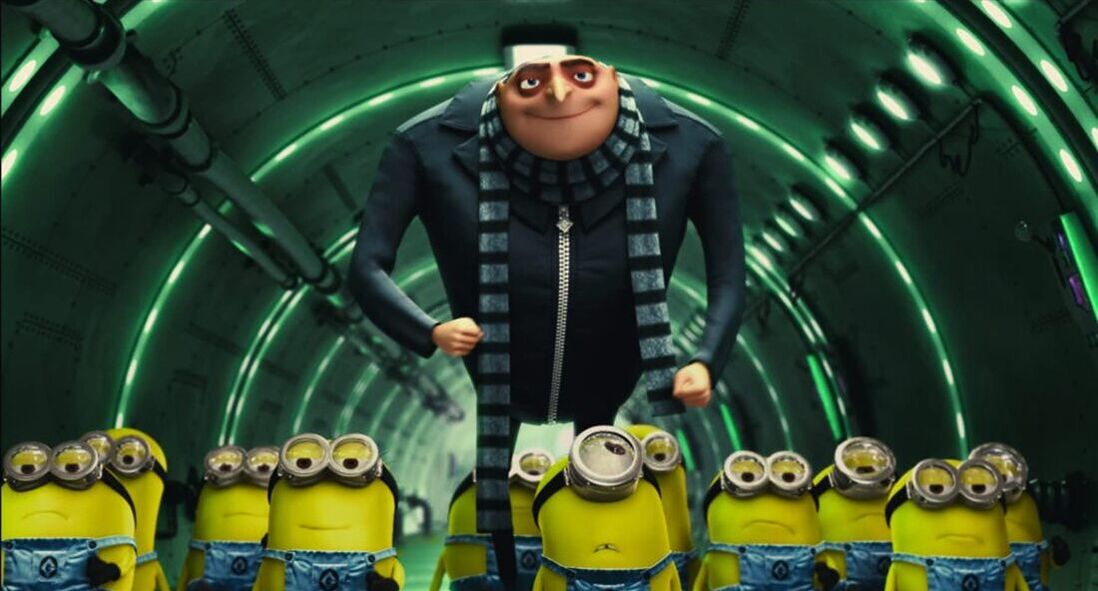|
By Adam Donato The film animation industry is limited in its big players. Pixar and Disney lead the charge while secondary studios like Dreamworks, Blue Sky, and Sony Animation struggle to consistently produce animated movies of high quality. In 2010, Illumination Entertainment burst onto the scene with Despicable Me. A familiar story of a villain enjoying being bad before going through a change of heart inspired by the kindness of others. With a relatively cheap budget for an animated movie, $69 million, Despicable Me exceeded expectations, making $543 million worldwide. Thus, a new franchise was born, and more importantly, the Minions became a staple of pop culture. People who are annoyed by the Minions, which can be justified, shouldn’t be shocked to hear that there is a large fanbase for the stupid yellow Tic-Tacs. They have been heavily featured in three Despicable Me movies and even got their own spin-off film, which is getting a sequel. The Minions are in the billion-dollar club, twice. Despite what the Minion brand spread into, they’re a good comic relief, sidekick for this movie. Their basic appeal is undeniable. They don’t speak any real language so there’s no cultural barrier. They don’t even have a discernable race since they are all yellow. They barely exhibit the male gender, which if they didn’t have predominantly male names like Kevin and Bob, it would be up to more of a debate. Their humor is very childish with all of the physical pain they inflict upon each other, but appeals to adults with their obvious pop culture references and musical cues. The character design is simple, but distinguishable. The Minions in the movies, at worst, are annoying and unfunny. The cause for the Minion hatred is the “relatable” Minion Facebook memes. In the movie, it is enjoyable watching them bond with the girls and it’s less annoying the first time watching them get into shenanigans because they’re stupid. The Minions, at a base level, work. Now about the rest of the movie, it’s surprisingly good. Revisiting it a decade later, it’s surprising to see how the emotional moments hold up. The bond between Gru and the girls is genuine and watching Gru struggle to be evil as his heart is being warmed is touching. For some reason, every animated movie for kids ends with a dance party with the entire cast (even the villain), but it feels like a crucial payoff of his character arc in this movie as he is experiencing love probably for the first time. This is done in the simplest way possible, as who doesn’t sympathize with adorable orphan girls. The story, as stated in the opening paragraph, is by no means original. This is another classic example of two of the same basic movie coming out in the same year, as Dreamworks’ Megamind can out only five months after Despicable Me. The two differ in that Despicable Me is more of a spoof on these ridiculous James Bond-esque villains and Megamind focuses more on superheroes. The point being that Despicable Me comes at a regular story from an interesting angle, but doesn’t stand out with quality in comparison to even the animated films of the same year. Toy Story 3 and How To Train Your Dragon came out earlier that summer and it was no question that the Best Animated Feature Oscar was a two-horse race. For an Illumination movie, Despicable Me is great. If it was a Dreamworks movie, it would be one of the better ones. If it was a Pixar movie, it’s only really better than Cars 2. What sets Pixar and Illumination apart? Quality. Pixar pushes boundaries and is constantly evolving its technology to create animated movies with beautiful visuals that complement their mature storytelling approach. Since 2006, Pixar has averaged a budget of $150 million per movie so they can have the time, resources, and talent necessary to set the standard for what animated movies should be. The mission statement for Illumination seems to be: Make a movie that is as commercially viable as possible with as little money as possible and in as short of time as possible. So while the success of Despicable Me is an achievement, it’s detrimental to the animation industry as the quality of the films will be sacrificed for an easy buck. The symbol for this cynicism, the Minions.
Speaking of villains (and getting back to the movie at hand), Despicable Me sports one who is fun and full of personality, Vector. Jason Segel really brings it in this voice performance so much so that he’s unrecognizable without knowing that it’s him. He acts as a good foil for Gru, as they’re both cheesy villains, but come for opposite backgrounds. Gru was denied love and came from a poor background where he had to work for everything. Vector was handed everything to him on a silver platter by his father, Mr. Perkins, who runs the bank, brilliantly voiced by Will Arnett, who actually gained weight to voice act this character. There is a visual gag in the movie that is so dumb that it’s brilliant, and it’s not the squid launcher. Vector steals the Pyramid of Giza and hides it in his yard, but in an attempt to hide it, he paints it sky blue with a cloud on it. Never fails to get a laugh. In short, Gru is an endearing protagonist, whose change of heart is authentic. The girls he adopts are cute and sympathetic. The minions aren’t annoying yet, actually being one of the highlights of this movie. The villains are fun and full of personality. The animation is good enough. The emotional moments all land surprisingly well and the jokes are consistently funny. Judging this movie on its own, not comparing it to other studios or the movies that followed in the franchise, then it’s a very solid animated family movie. Despicable Me was never going to win Best Animated Feature at the 2011 Oscars, but throw it a pity nomination. It’s good enough to deserve that.
0 Comments
Leave a Reply. |
The Snake HoleRetrospectives, opinion pieces, awards commentary, personal essays, and any other type of article that isn't a traditional review or interview. Archives
June 2024
Categories
All
|
|
|
disappointment media
Dedicated to unique and diverse perspectives on cinema! |


